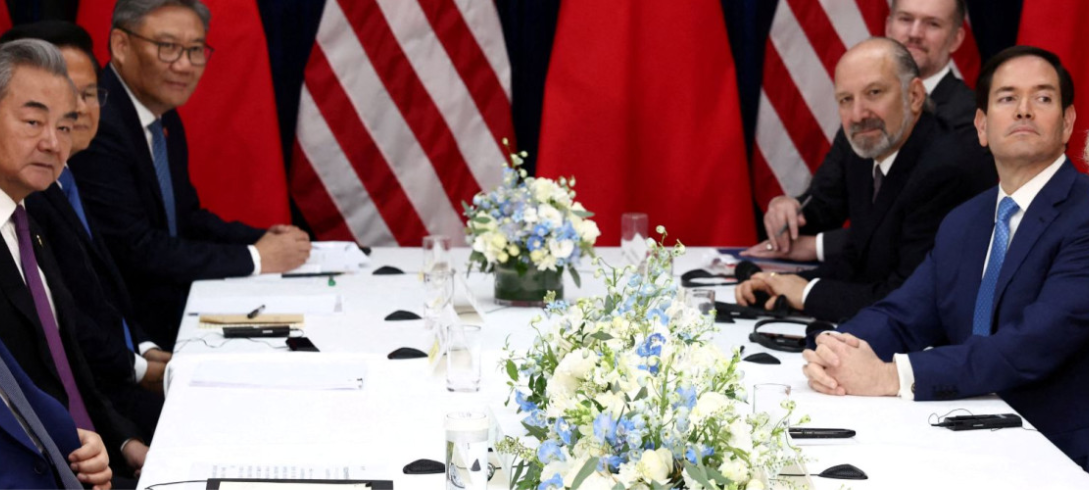The late-October agreement shelved some of China’s export controls. Antonia Hmaidi warns Europe must stop relying on luck and take real action to reduce economic vulnerabilities.
At their late-October meeting in South Korea, US President Donald Trump and Chinese President Xi Jinping made extensive commitments to lower US tariffs and shelve China’s sweeping export controls on rare earth elements (REEs), announced just two weeks earlier. Beijing’s pledge to suspend the implementation of these restrictions offers Europe a last breather to “de-risk” its economic dependence on China. If the region fails to rise to the challenge – even after Beijing’s early October announcements triggered fears of car making and defense industries grinding to a halt – its economy and its credibility will be hit hard.
The problem is that Europe has had many wake-up calls that failed to rouse it. Chinese export controls on antimony (alongside gallium and germanium) in 2024 led to German adhesives maker Henkel invoking “force majeure” for not being able to deliver some products to the automotive industry. Beijing’s April 2025 export requirements for seven medium and heavy REEs hit supply chains and led to European industry associations warning of production stops. And Chinese export controls on chips made by Dutch-based, Chinese-owned Nexperia in October 2025 saw German car-parts maker Bosch cut production.
It seems many European companies did not learn their lessons from supply-chain disruptions brought by the Covid-19 pandemic from early 2020 into 2023. And any sense of urgency in 2024 and 2025 quickly dissipated as each new wake-up call was swiftly followed by reprieves of different kinds: Henkel quickly secured antimony export licenses, China in mid-2025 pledged to expedite licensing of medium and heavy REEs to Europe, and Trump and Xi in late October agreed the resumption of shipments of chips from Nexperia’s Chinese factories, although recent MOFCOM comments already cast doubt on this agreement.
Hoping for the best is no longer an option for Europe
But hoping for the best is no longer an option for Europe. For one thing, Trump and Xi’s commitments to each other are no more than a truce in their trade war. China has not revoked but only suspended the introduction of sweeping export controls on REEs for a year. And its shift to issuing general licenses for gallium, germanium and antinomy also shows that export controls as a geopolitical tool are here to stay. European companies must face the fact that even in areas where Beijing is happy to provide licenses, they are imparting commercial data during applications that gives China’s government important strategic information.
What the White House hailed as a “historic agreement” between Trump and Xi offers no signs that the US and China are on the brink of any lasting settlement that will end their recent cycles of confrontation and muddling through. Both countries have oscillated from crisis to crisis since at least 2016 due to incompatible long-term interest, so in a year, at the latest, some of the export controls shelved at the end of October will almost certainly come back into focus. China, for one, makes no bones about further strengthening export controls, as sketched in its blueprint draft for the country’s upcoming 2026-2030 Five-Year Plan.
Framed more positively, the US and China have bought the EU time to finally do something about its economic dependencies on China. European companies recently felt the sharp – if mostly short – pain of Chinese suppliers failing to deliver, which should give Europe more momentum to de-risk in practice. In addition, Chinese export controls also seem to have influenced the Trump administration to seek more cooperation on economic security with the EU. G7 environment ministers recently pledged “actions to secure resilient, reliable and transparent supply chains,” opening a strategic window for trans-Atlantic cooperation.
The EU needs to use the window now open to de-risk economic ties with China
But Europe also needs to take its own measures. It needs to commit to price floors for REEs or an exclusion of Chinese-made and Chinese-processed rare earths (and components) to allow European companies to build up capacity to reliably meet demand. New and effective raw -material partnerships with Australia, Malaysia and other countries will enable Europe to kick start processing and recycling capacities, without first having to map European deposits of rare earths. The US government’s decision to invest in MP Materials and commit to buying set volumes at specific prices shows that secure demand induces the investments needed.
Europe needs to reliably map supply-chain risks for semiconductors. Although Nexperia was seen as a risk and excluded from EU funding due to its Chinese ownership, some automotive suppliers apparently still relied on it exclusively for some chips. European companies will need to go back to their business textbooks on second- and third-sourcing, and replace just-in-time production with strategic stockpiles of critical components. The EU should help them by instituting market access restrictions, either through tariffs in areas in which dependency on China is high, economic security standards, or local content requirements.
Failing to use the window now open to de-risk economic ties with China would expose both Europe’s strategic weakness and its practical vulnerability. Failing to finally respond to supply shocks from China would damage Europe’s reputation as a reliable global actor, further weakening its geopolitical clout. Key industries – particularly automotive, defense and other high-tech manufacturing – in industrial heartlands like Germany would be severely hit, making Europe’s economy only more dependent on the whims of China and the US and their great power rivalry. Europe must stop relying on luck and grasp the nettle of de-risking.







